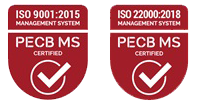Food grade carbon dioxide (CO2) plays a vital role in the food and beverage industry, being used for purposes such as carbonation, refrigeration, and packaging. The production of food grade CO2 is a carefully controlled process to ensure it meets the high standards required for use in food and drink products.
In this post, we’ll explore how food grade CO2 is mass-produced, focusing on the sources, purification process, and quality control measures involved.
1. Sources of CO2
CO2 is a naturally occurring gas that is produced through various processes. The mass production of food grade CO2 typically involves capturing CO2 as a byproduct from industrial processes. Some of the most common sources of CO2 include:
– Fermentation: This process occurs naturally in the brewing and ethanol production industries. During fermentation, yeast converts sugars into ethanol and CO2. The CO2 produced in this process is captured and purified for food-grade use.
– Ammonia Production: The production of ammonia, which is essential for fertilizers, also produces CO2 as a byproduct. This CO2 is often collected, purified, and processed for various uses, including food grade applications.
– Natural Sources: In some cases, CO2 is obtained from natural underground reservoirs, where the gas has been trapped for centuries. After extraction, this CO2 is purified to meet the strict standards required for food grade use.
Each of these sources provides raw CO2, which then undergoes further refinement to meet food grade standards.
2. Purification Process
Once the raw CO2 is captured, it must go through a stringent purification process to remove any impurities and contaminants that may be present. This process is essential to ensure that the CO2 is safe for use in food and beverages. The typical steps involved in purifying CO2 include:
– Filtration: Initially, CO2 passes through filters that remove large particles and contaminants. This helps to eliminate dust, dirt, and other impurities from the raw CO2.
– Absorption: The next step involves using absorbents to remove chemical impurities like sulfur compounds, water vapor, or volatile organic compounds (VOCs). This ensures that the CO2 is free from substances that could affect the taste or safety of the food and drinks it will come into contact with.
– Distillation: Distillation is a crucial part of the process, where the CO2 is cooled and condensed into a liquid state. This phase separates the CO2 from any remaining impurities by boiling off substances with different boiling points.
– Drying: The final step in purification involves removing any residual moisture from the CO2 to ensure the gas remains dry, which is essential for many food processing applications. Drying prevents contamination and ensures the CO2 is stable for storage and transportation.
3. Quality Control Measures
To ensure that the CO2 produced meets food-grade standards, quality control is rigorously applied throughout the production process. Regulatory bodies, such as the National Agency for Food, Drug Administration and Control (NAFDAC) have strict requirements for CO2 used in food and beverage applications.
– Testing for Purity: The final CO2 product is subjected to rigorous testing to verify that it contains minimal impurities. This includes testing for contaminants such as hydrocarbons, sulfur compounds, and moisture content, which could compromise the quality of the food or beverage.
– Batch Certification: Each batch of food grade CO2 is carefully monitored, and certificates of analysis (COA) are often issued to verify its compliance with industry standards. This ensures that businesses using CO2 in their products can trust the quality and safety of the gas.
– Storage and Handling: Food grade CO2 is stored in pressurized tanks under specific conditions to maintain its purity. Proper handling and transportation are also key to ensuring that the CO2 doesn’t get contaminated before reaching the end user.
Conclusion
The mass production of food grade CO2 is a complex and carefully monitored process that begins with sourcing CO2 from industrial processes or natural reserves. After capture, the gas undergoes purification and quality control to ensure it meets the strict standards required for use in food and beverages. From carbonation to refrigeration and packaging, food grade CO2 is essential for many aspects of the food and beverage industry. As demand for quality and safety grows, so too will the importance of efficient and sustainable CO2 production methods.

